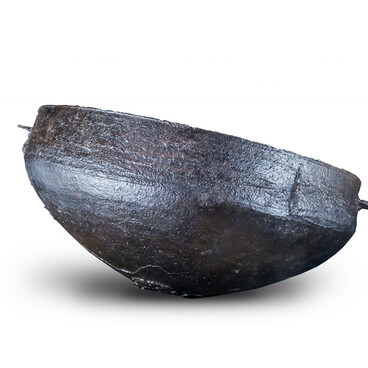In the 13th — 15th centuries, a medieval state, the Golden Horde, existed on the territory of central Eurasia. There was no coining in the early period of the development of its culture. A ‘pool’, the local copper monetary unit, copied the foreign design. For example, the coins that were produced on the territory of the Volga Bulgaria conquered by the Horde in the middle of the 13th century are similar to the money of the Baghdad Caliph an-Nasir from the Abbasid dynasty.
There was no single currency in the Horde. Each part of the country, ulus (nomad camp), — made its own coins. At the same time, not only their own money was in circulation within the country, but also from European, Middle Eastern and Central Asian states. Later, the Golden Horde began to produce silver coins. They were called yarmaks. Coins were made in Bolgar, one of the most developed conquered cities. Only foreign gold coins could be found those days. However, most of them were not used as they were taken by the nobility and stored in their treasuries.
Nowadays, archaeologists have discovered nine treasures with coins on the territory of Bolgar (it is the modern name of the ancient city of Bulgar). They consist of money similar in period of minting. For example, treasure No. 2 mainly contains coins made during the reign of Uzbek Khan and his son Janibek. Researchers suggest that this treasure was hidden in the 30-40s of the 14th century.
Coins with countermarks were kept in some hoards. Countermark is a special marking placed on top of the drawing. Countermarks could indicate both the time of manufacturing and the area where the coin was used. Some khans put a mark with a tamga (a generic sign) on the coins. For example, the tamga of Genghis Khan represented a circle as a symbol of the sun.
The exhibition of the Bolgar Museum-Reserve presents a hoard, which consists of coins made in Gulistan and Sarai al-Jadid. Some of them belonged to Khizr Khan and were made in 1361. It was not possible to establish who had produced the rest of the coins. It is only known that they were made in 1350.
On the front side of one of the coins, there is the inscription ‘Minting of Saraya al-Jadid, 752’, framed with six petals. There is a flower rosette on the back.
On the front side of the Khizr Khan’s coins (1361), you can read the inscription: “Sultan Khizr Khan the fair, may his reign last.” And on the back, it says " Minting of Saraya al-Jadid 762’ or " Minted in Gulistan 762’.
There was no single currency in the Horde. Each part of the country, ulus (nomad camp), — made its own coins. At the same time, not only their own money was in circulation within the country, but also from European, Middle Eastern and Central Asian states. Later, the Golden Horde began to produce silver coins. They were called yarmaks. Coins were made in Bolgar, one of the most developed conquered cities. Only foreign gold coins could be found those days. However, most of them were not used as they were taken by the nobility and stored in their treasuries.
Nowadays, archaeologists have discovered nine treasures with coins on the territory of Bolgar (it is the modern name of the ancient city of Bulgar). They consist of money similar in period of minting. For example, treasure No. 2 mainly contains coins made during the reign of Uzbek Khan and his son Janibek. Researchers suggest that this treasure was hidden in the 30-40s of the 14th century.
Coins with countermarks were kept in some hoards. Countermark is a special marking placed on top of the drawing. Countermarks could indicate both the time of manufacturing and the area where the coin was used. Some khans put a mark with a tamga (a generic sign) on the coins. For example, the tamga of Genghis Khan represented a circle as a symbol of the sun.
The exhibition of the Bolgar Museum-Reserve presents a hoard, which consists of coins made in Gulistan and Sarai al-Jadid. Some of them belonged to Khizr Khan and were made in 1361. It was not possible to establish who had produced the rest of the coins. It is only known that they were made in 1350.
On the front side of one of the coins, there is the inscription ‘Minting of Saraya al-Jadid, 752’, framed with six petals. There is a flower rosette on the back.
On the front side of the Khizr Khan’s coins (1361), you can read the inscription: “Sultan Khizr Khan the fair, may his reign last.” And on the back, it says " Minting of Saraya al-Jadid 762’ or " Minted in Gulistan 762’.



